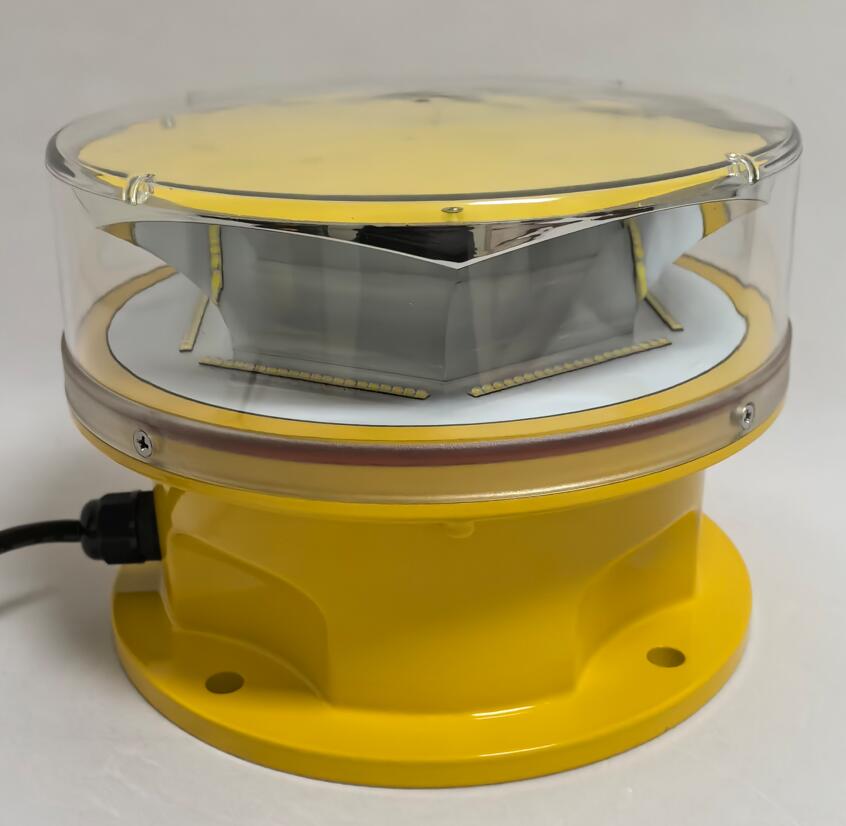The aviation industry continuously evolves with technological advancements, and LED lights in aviation have become a game-changer. From runway lighting to obstruction beacons, LED technology offers superior efficiency, durability, and visibility compared to traditional lighting solutions. This article explores the applications, benefits, and regulatory considerations of LED lights in aviation, highlighting their growing role in modern airfield and aircraft safety systems.
Why LED Lights Are Transforming Aviation Lighting
Traditional incandescent and halogen lights have long been used in aviation, but LED lights in aviation provide significant advantages:
Energy Efficiency – LEDs consume up to 80% less power than conventional bulbs, reducing operational costs.
Longer Lifespan – LEDs last 50,000+ hours, minimizing maintenance and replacement frequency.

Enhanced Visibility – Bright, consistent illumination improves safety in low-visibility conditions.
Durability – Resistant to vibrations, extreme temperatures, and weather conditions.
Instant On/Off – Unlike traditional bulbs, LEDs reach full brightness immediately, crucial for aviation signaling.
| LED Lights in Aviation |
Key Applications of LED Lights in Aviation
1. Runway and Taxiway Lighting
Runway Edge Lights – White LEDs outline runway boundaries for safe takeoffs and landings.
Taxiway Guidance Lights – Blue LEDs help pilots navigate airport taxiways.
Threshold and End Lights – Green and red LEDs indicate runway starts and ends.
2. Obstruction and Hazard Lighting
Red LED Beacons – Warn pilots of tall structures like towers, cranes, and wind turbines.
| LED Light in Aviation |
Medium-Intensity White Strobes (LED) – Used for daytime visibility on high obstacles.
3. Aircraft Navigation and Anti-Collision Lights
Wingtip Navigation Lights – Red (left) and green (right) LEDs improve aircraft visibility.
Strobe Lights – High-intensity white LED flashes enhance recognition during flight.
4. Airport Apron and Ramp Lighting
LED Floodlights – Provide bright, uniform illumination for ground operations.
Guidance Signs – LED-backlit signs improve readability in all weather conditions.
Regulatory Standards for LED Lights in Aviation
Aviation authorities, including the FAA (U.S.), ICAO (International), and EASA (Europe), have strict guidelines for LED lights in aviation:
Intensity and Color Compliance – Must meet specific candela and chromaticity requirements.
Flicker and Flash Rates – Anti-collision strobes must adhere to standardized flash patterns.
Environmental Resilience – Must withstand extreme temperatures, moisture, and UV exposure.
Certification – LED aviation lights must undergo rigorous testing (e.g., RTCA DO-160 for environmental conditions).
Benefits of Transitioning to LED Aviation Lighting
1. Cost Savings
Lower energy consumption reduces electricity bills.
Reduced maintenance due to longer lifespan.
2. Improved Safety
Brighter, more reliable illumination enhances pilot visibility.
Instant activation eliminates warm-up delays.
3. Sustainability
LEDs are mercury-free and have a smaller carbon footprint.
Solar-compatible options support eco-friendly airport operations.
Future Trends in LED Aviation Lighting
As technology advances, LED lights in aviation will see further innovations:
Smart LED Systems – Automated brightness adjustment based on weather and visibility.
Wireless Control – Remote monitoring and diagnostics for predictive maintenance.
Integration with UAV Traffic – Enhanced LED lighting for drone detection and avoidance.
LED lights in aviation represent a significant leap forward in airfield safety, efficiency, and sustainability. Their adoption across runways, obstruction lighting, and aircraft systems ensures better visibility, lower operational costs, and compliance with stringent aviation standards.
As airports and aviation authorities continue to upgrade their infrastructure, LED lights in aviation will remain at the forefront of modern air traffic safety solutions. Investing in this technology today paves the way for a smarter, safer, and more efficient aviation future.